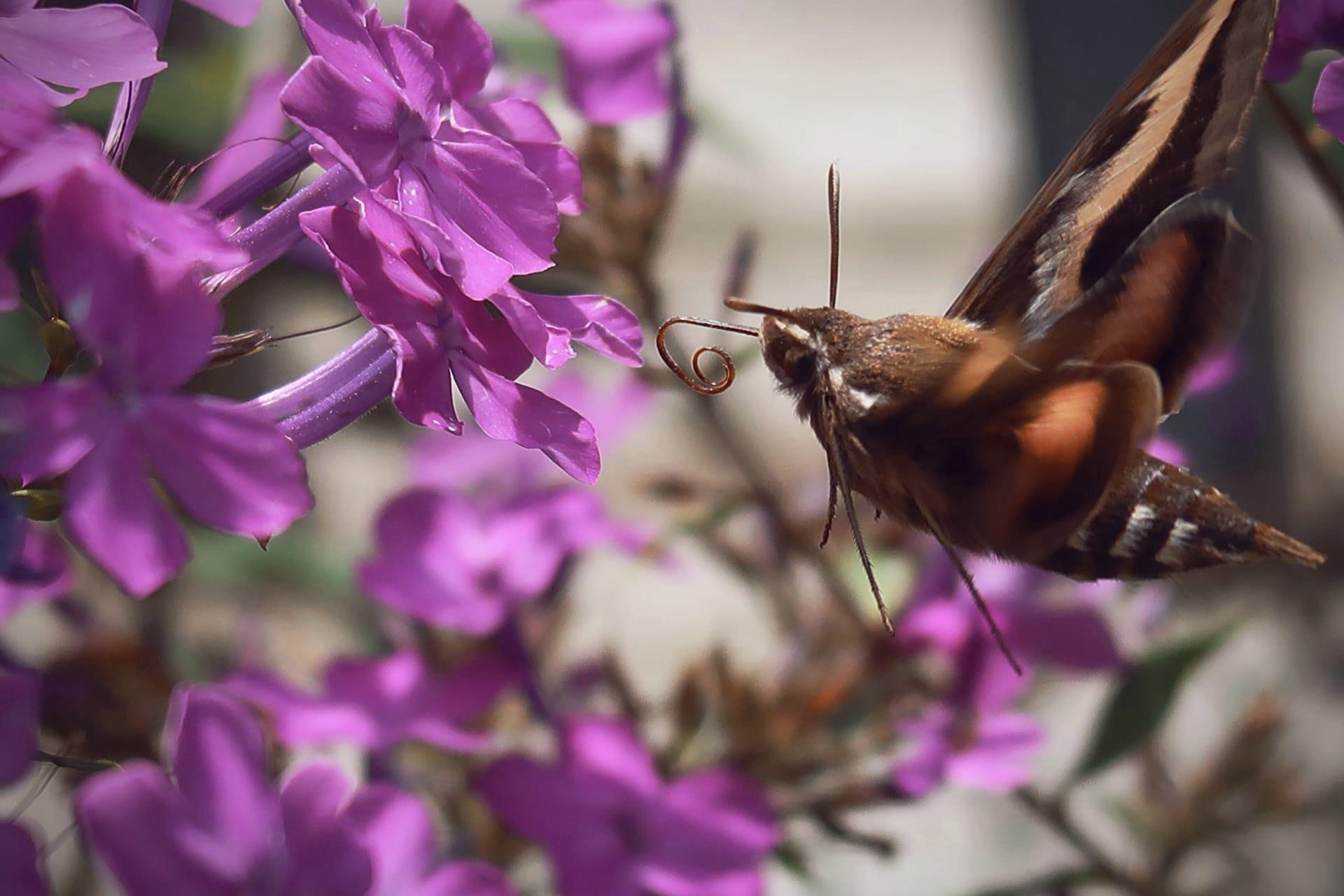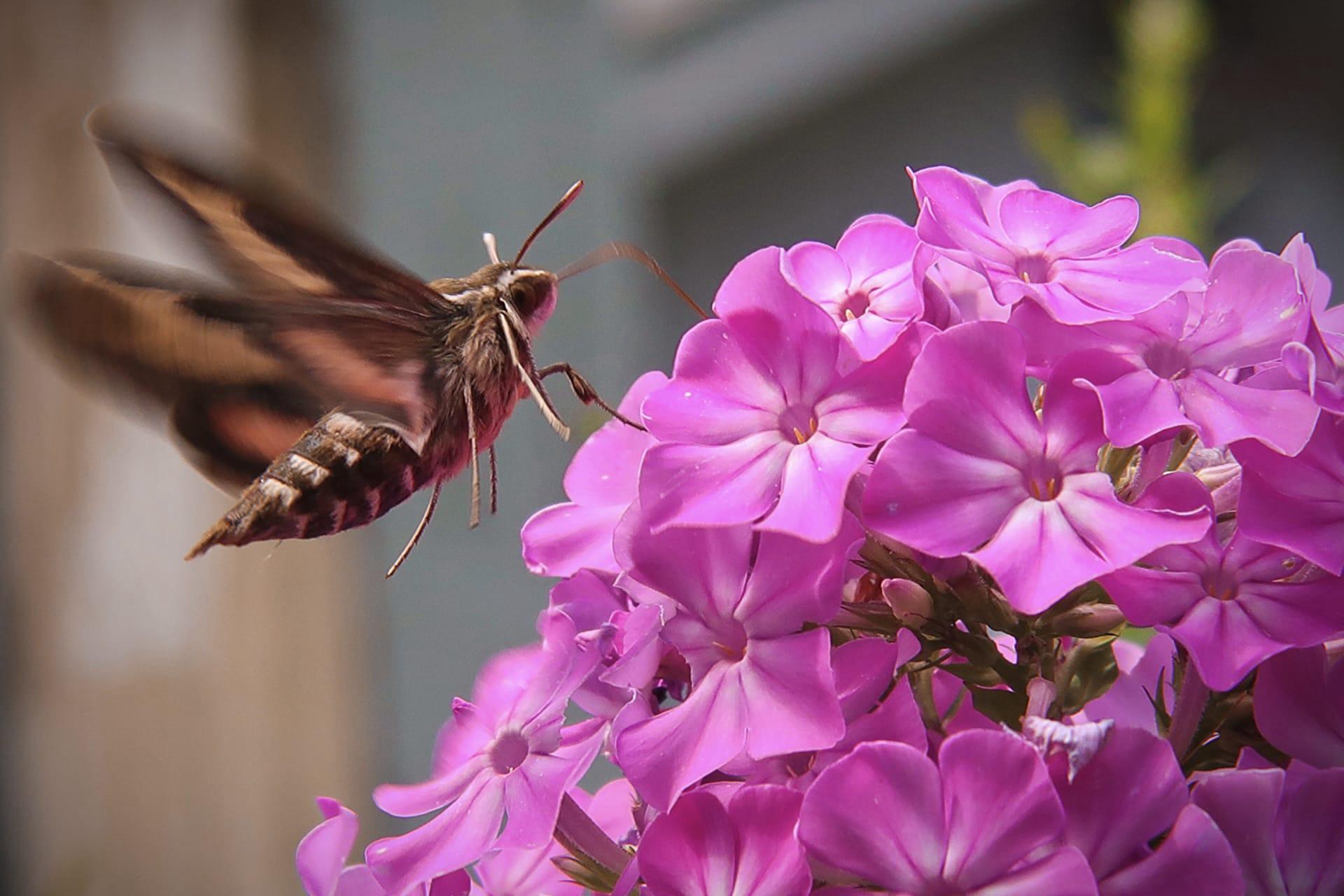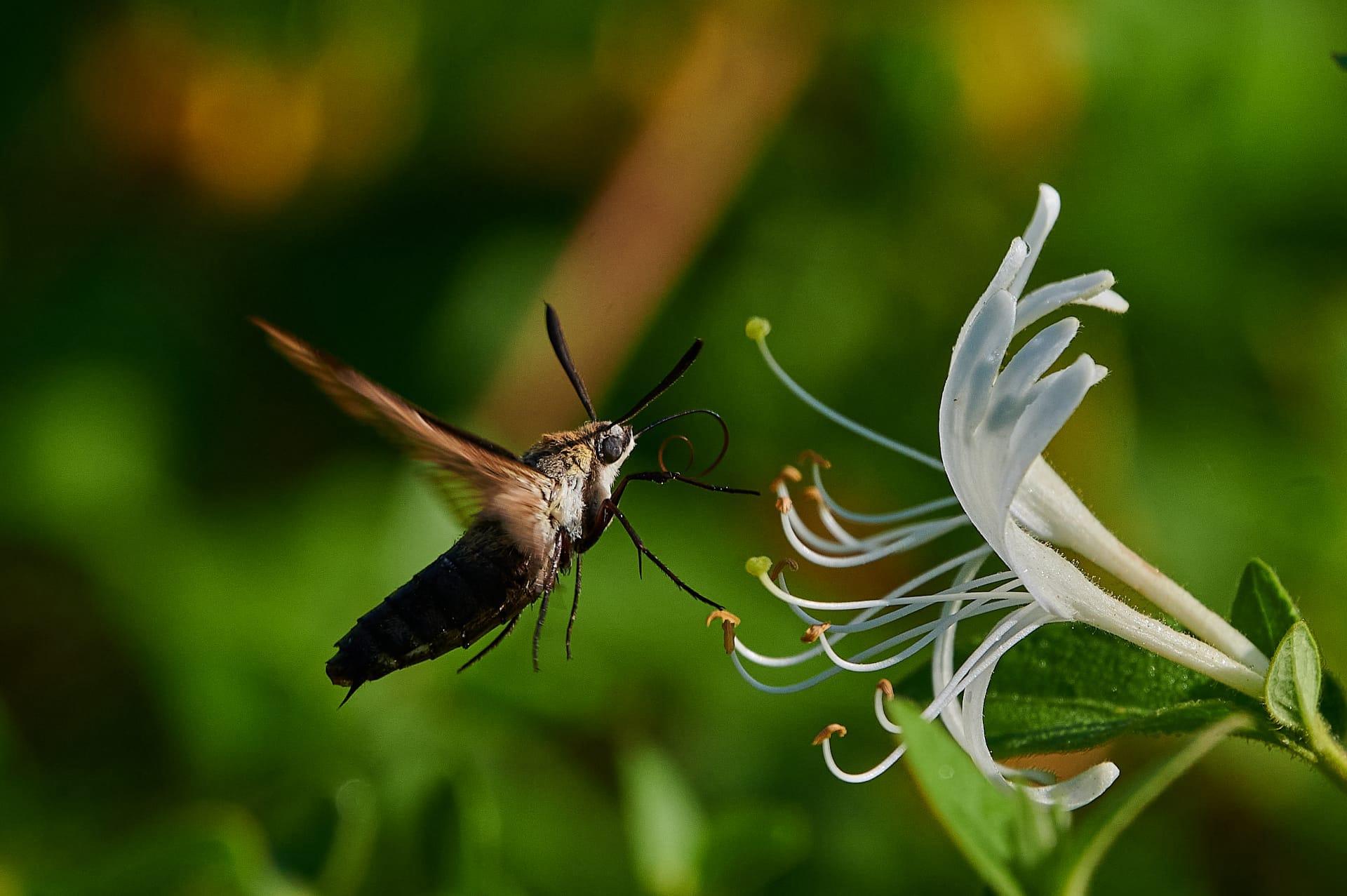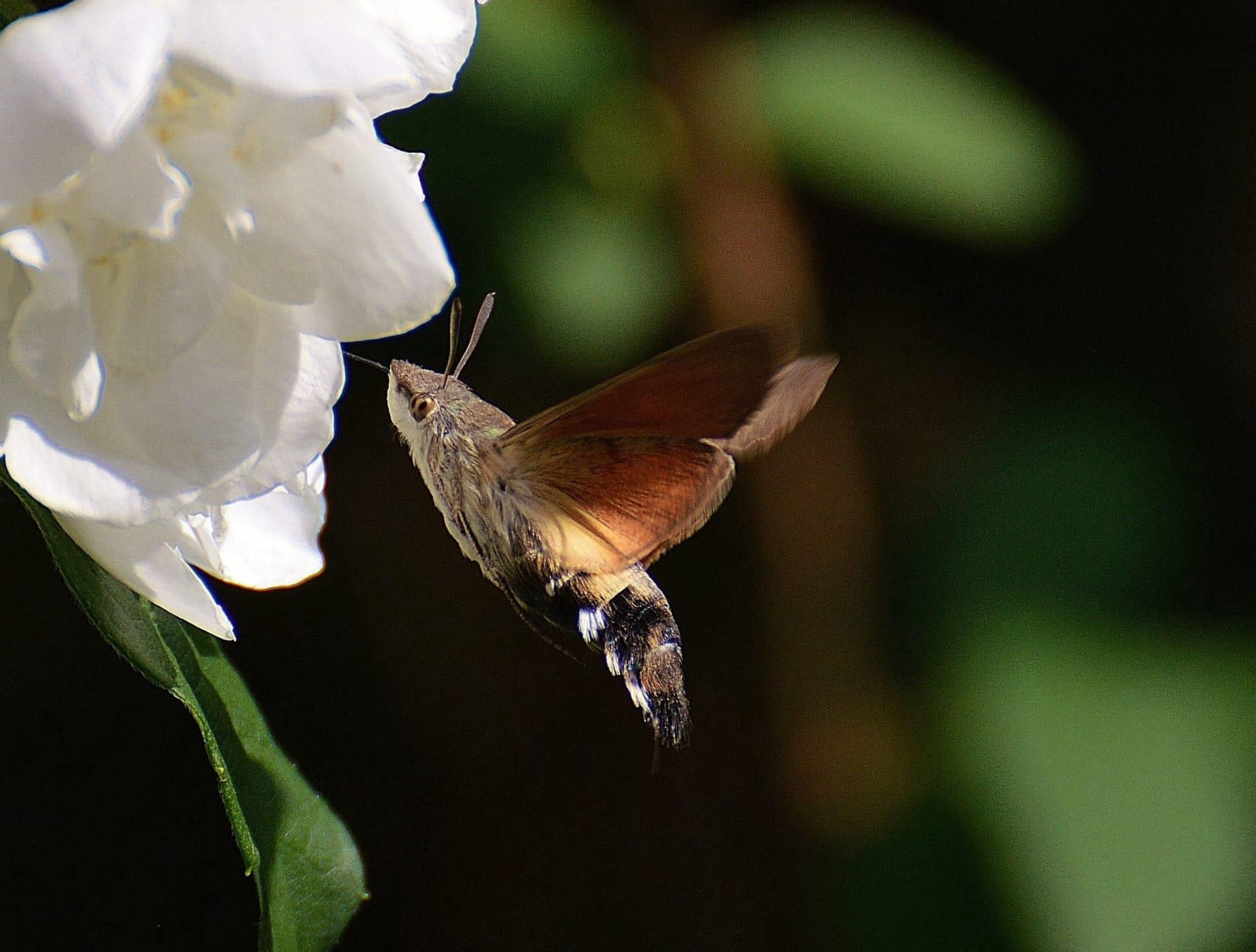1
One of the most fascinating aspects of the Hummingbird Moth, specifically the species known as Hemaris thysbe, is its remarkable wing speed. These moths can flap their wings at an astonishing rate of 70 times per second, rivaling the speed of actual hummingbirds. This rapid wing movement not only allows them to hover effortlessly in mid-air but also creates a humming sound, which is how they get their name. Imagine the energy and precision required to sustain such a high frequency, which is a testament to their incredible muscle efficiency and aerodynamic design.
Another intriguing fact about Hummingbird Moths is their tongue, scientifically referred to as a proboscis. Unlike most moths that have a relatively short proboscis, the Hummingbird Moth's proboscis can be astonishingly long, extending up to twice the length of its body. This remarkable adaptation allows them to feed on nectar from deep within flowers, much like a hummingbird. Their proboscis, which can reach lengths of up to 28 centimeters in some species, is coiled under their head when not in use, unraveling to its full length when feeding.

2
Hummingbird Moths have a unique way of regulating their body temperature, a process known as thermoregulation. Unlike other insects, they can generate and maintain a body temperature close to that of mammals, sometimes reaching up to 30 degrees Celsius (86 degrees Fahrenheit). This is especially crucial since they are active during cooler periods such as dusk or dawn. They achieve this by shivering their flight muscles, a mechanism similar to how birds warm up before flight. This ability to control body temperature enables them to function in colder temperatures where other insects would be inactive.
These moths also showcase a remarkable mimicry, not just in behavior but in appearance as well. They possess a body and coloration that closely resemble a hummingbird. Their olive-green and burgundy coloration, coupled with a stout body and tail, make them look strikingly similar to their avian namesakes. This mimicry serves as a defense mechanism, deterring predators who might mistake them for the less palatable hummingbird. It's a fascinating example of convergent evolution, where two unrelated species evolve similar traits.

3
When it comes to reproduction, the Hummingbird Moth displays a unique egg-laying technique. Females lay their eggs individually on the underside of leaves, specifically choosing plants that will serve as food for the caterpillars. This selective process ensures the survival of their offspring, as the emerging caterpillars have immediate access to food. The females are known to lay up to 200 eggs over their lifespan, carefully distributing them across various host plants.
The transformation process of Hummingbird Moths is also quite fascinating. They go through a complete metamorphosis, starting from an egg to a caterpillar, then to a pupa, and finally emerging as a moth. The caterpillar stage is particularly interesting, with a striking green or yellow color and horn-like projections on their posterior, making them resemble small dragons. These caterpillars feed voraciously on host plants before pupating. The pupa stage can last from two weeks to several months, depending on environmental conditions, leading to the emergence of the adult moth.

4
One of the unique behavioral characteristics of the Hummingbird Moth is its flower fidelity. Unlike many other nectar-feeding insects, these moths often exhibit a preference for a particular type of flower and will consistently visit similar flowers within an area. This behavior not only aids in efficient foraging but also enhances the pollination of specific plant species. Their long proboscis and hovering ability enable them to extract nectar from deep-throated flowers, which many other insects cannot reach.
Another fascinating aspect is their vision. Hummingbird Moths have excellent eyesight, which is crucial for their twilight activities. They have large, compound eyes that provide a wide field of vision, essential for navigating through dense vegetation and avoiding predators. Additionally, their eyes are highly sensitive to light, allowing them to see well in low-light conditions. This exceptional vision plays a pivotal role in their ability to locate flowers and avoid obstacles while flying at high speeds.

5
The sensory capabilities of Hummingbird Moths extend beyond their impressive vision. They possess an acute sense of smell, which is vital for locating flowers from a distance. Their antennae are equipped with sensory receptors that can detect floral scents, guiding them to their nectar sources. This sense of smell is especially important during dusk and dawn when visual cues are less reliable due to lower light conditions.
Lastly, the lifespan of the Hummingbird Moth is quite intriguing. While most moths have a relatively short adult life, ranging from a few days to a few weeks, the Hummingbird Moth enjoys a comparatively longer lifespan. They can live for several months, with some species surviving up to a year. This extended lifespan is rare among moths and allows them to have multiple broods of offspring within a single season, contributing to their survival and proliferation in various environments.